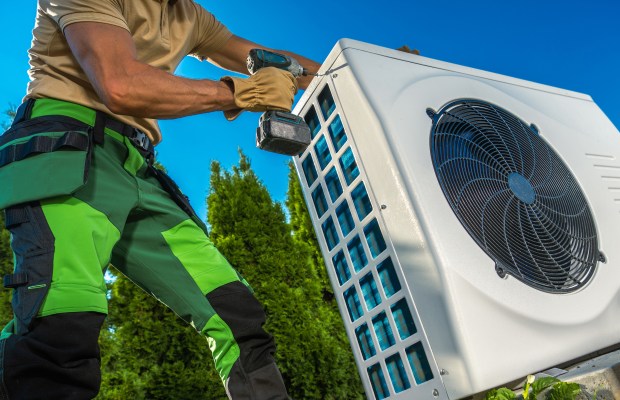In the last year or so, heat pumps have gone from being little known outside of HVAC circles to becoming a key plank in the Inflation Reduction Act. Today’s heat pumps are vastly superior to those deployed decades ago, but one startup thinks there’s still ample room for innovation.
Harvest Thermal isn’t tinkering with the heat pump itself, though. In fact, the company uses an off-the-shelf system in all of its installations. Rather, it has developed a small add-on about the size of two shoeboxes that allows the heat pump to run when electricity is cheapest and cleanest.
The idea behind the company was hatched when co-founder and CEO Jane Melia was confronted with a dying gas furnace in her “creaky old home in Berkeley.”
“There was no way I wanted to put gas in again,” said Melia, who had previously worked at a solar startup. The obvious answer was to replace it with a heat pump, but to fully rid her home of gas, she’d also have to replace the water heater. That meant two heat pumps running on-demand, a setup that felt inelegant to Melia, an engineer with a doctorate in fluid dynamics. If she wanted to run either when electricity was cheap or when solar power was plentiful, she’d have to buy a big battery to boot. “Who can afford that?”
The company’s goal to drive down the cost of home electrification has netted it a $4 million early stage round led by Earth Foundry with participation from MUUS Climate Partners, Starshot Capital, and Portfolia, TechCrunch+ has exclusively learned.
Melia and her co-founders “went to the drawing board,” she told TechCrunch+, and came up with a system that integrated a heat pump and a hot water storage tank with “some really, really good controls.”
Those controls would include flow meters and temperature sensors along with some electronics that are continuously modeling the fluid dynamics of the water inside the storage tank. “That combination means that at any point in time, we know to within 4°F what the temperature is at any point in the tank,” Melia said.
With that information, the Harvest Thermal team can run the heat pump during the day when solar power is humming and dump the heat into the hot water storage tank. At night, when the home needs heat, the small pod containing the sensors and smarts can call on the hot water to provide heating to the home.
Compared with a regular water heater, the one Harvest Thermal uses is super-sized: 119 gallons compared with the 80 or so gallons in a typical single-family home. But because the actual heating is supplied by an external condenser, the volume the tank occupies in the home is no bigger than a typical heat pump water heater.
To optimize the system and ensure that hot water is always available, Harvest Thermal’s pod accounts for the size of the home, number of occupants, typical usage patterns, and weather forecast. In the summer, the pod may only keep the top third of the tank heated to 150°F, while in the winter it might heat all of it.
The tank is, effectively, a battery.
And fortunately for Harvest Thermal, which was founded in 2019, the Inflation Reduction Act has an entire section devoted to thermal storage, though it’s not clear at this point how that might apply to homeowner systems (the law appears written with utility-scale or industrial uses in mind). In Harvest Thermal’s home market of California, Melia said that her company’s customers can get a rebate that’s $2,200 larger than the one offered for a heat pump alone.
The system can be sized according to the home. Larger homes might require bigger heat pumps and two or more storage tanks, while apartments and smaller condos can get by with smaller tanks.
Melia said that Harvest Thermal’s systems cost about as much as a “good quality electric system.” Because the company’s pod is the product, Melia envisions a future where it can work with a range of different heat pump manufacturers.
So far, the startup has installed over 100 systems in California and Oregon. The new funding will extend the company’s runway while it seeks to add more installers and customers.
It’s a clever and straightforward system. Apart from runway, Harvest Thermal’s main hurdles appear to be traction with installers, who tend to offer recommendations to homeowners when it comes time to replace old systems, and the fact that both the heating unit and water heater need to be replaced at the same time. If people just replaced their water heater, that might be a turnoff. But at the same time, Melia said that customers typically save 30% on their bills because they can make the most of time-of-use electricity pricing.
If the company can also get access to credits for thermal storage under the IRA, its case might get even stronger.
